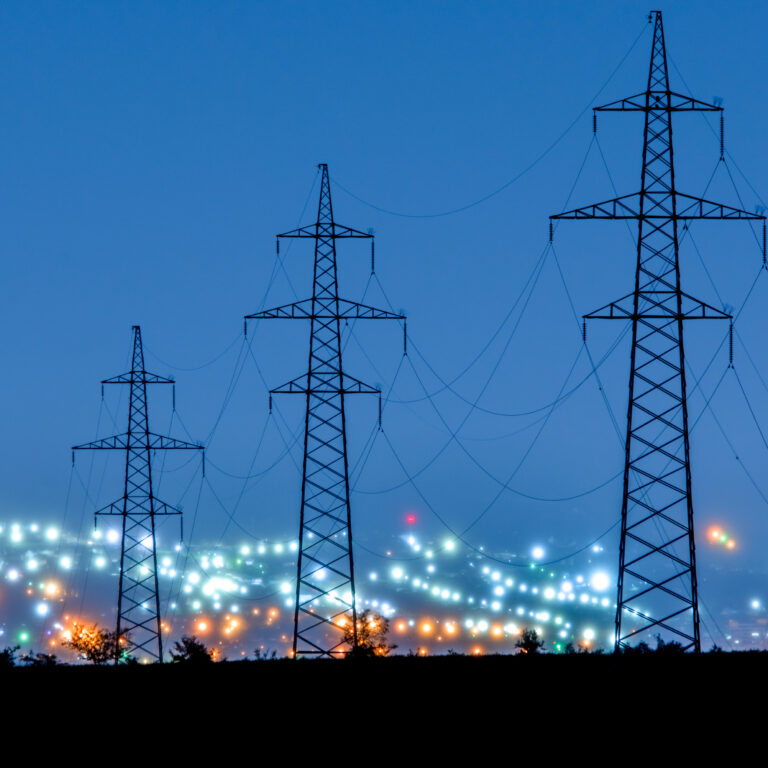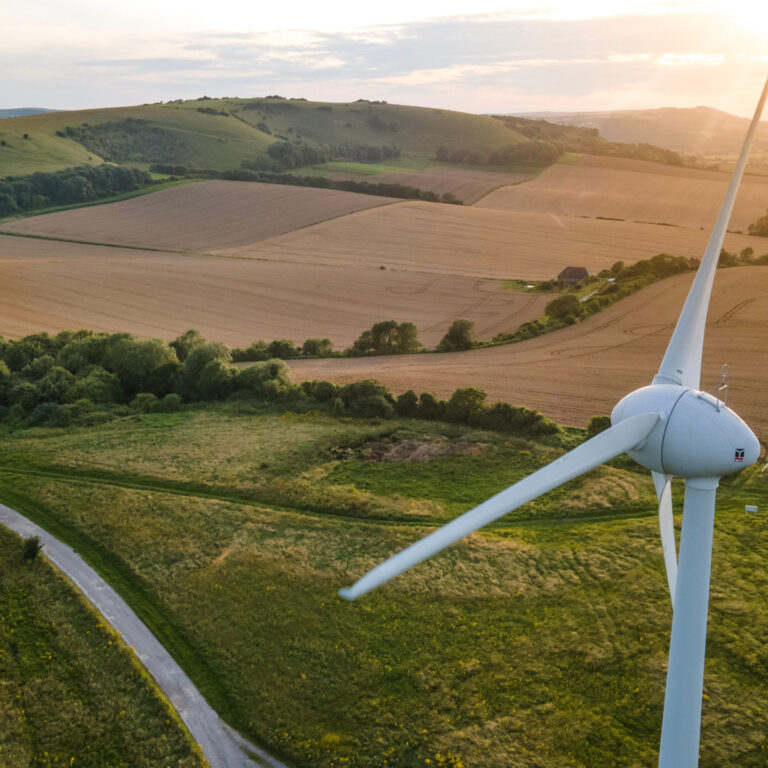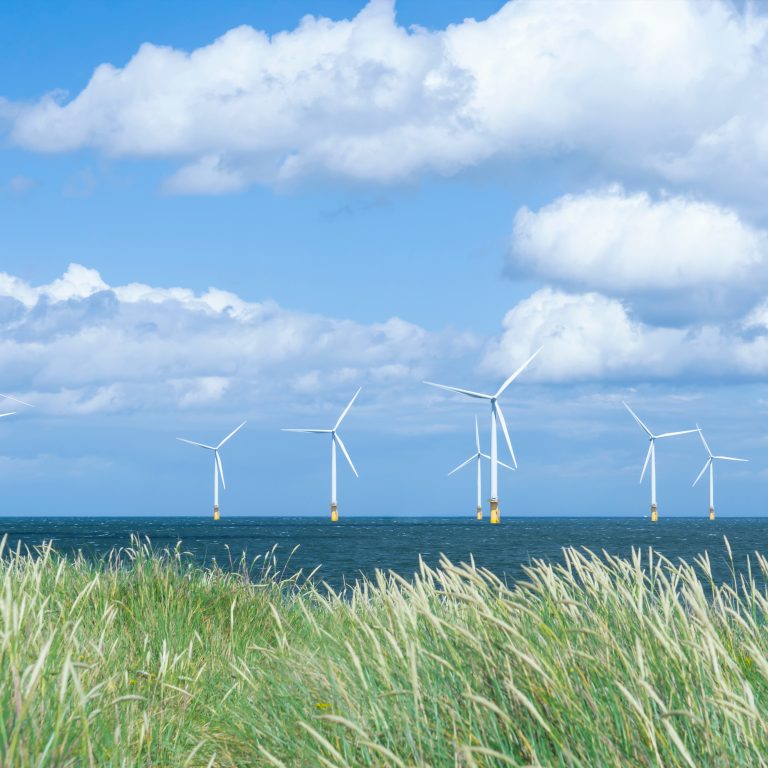- Renewables supplied more than 40% of electricity during first quarter of 2020, with output overtaking fossil fuels for the first time in February.
- Factories and supermarkets reduced electricity usage at key times to help keep the grid stable when power from wind farms fell and margins tightened.
- Electricity demand on weekdays down 13% to lowest level since 1982 due to Covid-19 lockdown – with carbon emissions also falling.
Independent analysis, conducted via Imperial Consultants, by academics from Imperial College London for Drax Electric Insights shows how volatile the country’s electricity system was in the first quarter of 2020 – but how a variety of energy technologies rose to the challenge.
Output from wind farms soared, up by 40% compared to Q1 2019, as severe storms meant Britain experienced its wettest and windiest February since records began – but it was flexible power stations and action from businesses, able to reduce their electricity usage in January, which helped prevent blackouts during cold, calm spells.
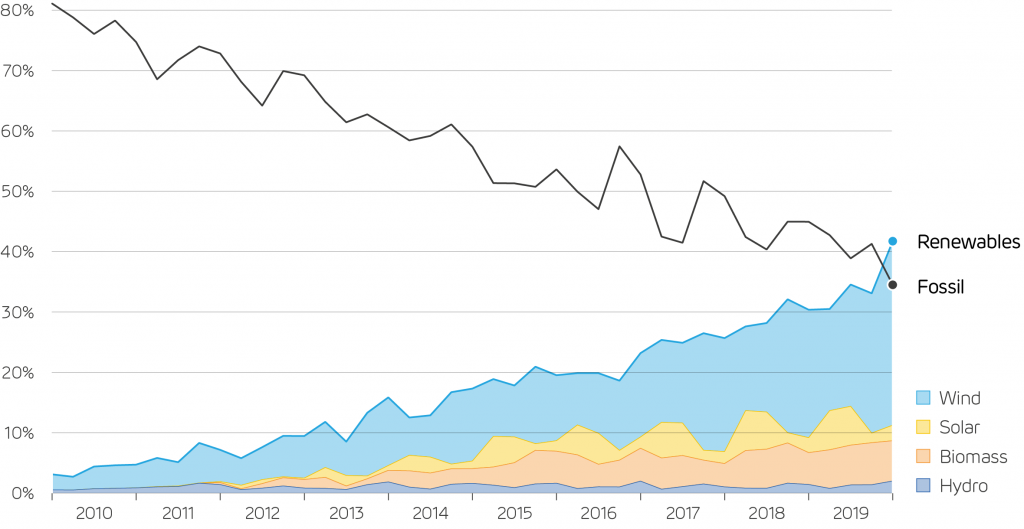
The share of electricity supplied by renewables and fossil fuels each quarter over the past decade
Dr Iain Staffell of Imperial College London and lead author of the quarterly Electric Insights reports said:
“Britain’s electricity system is under pressure like never before, with both the country’s weather getting more extreme and a global pandemic testing its resolve.
“So far in 2020 we’ve seen companies reducing their demand for electricity to help keep the grid stable when supply from wind power rapidly decreased, and then the Covid-19 lockdown caused many businesses to shut up shop, reducing electricity demand and creating new challenges with oversupply of power.
“Having flexibility within the power system at these critical moments is crucial to keeping Britain’s lights on.”
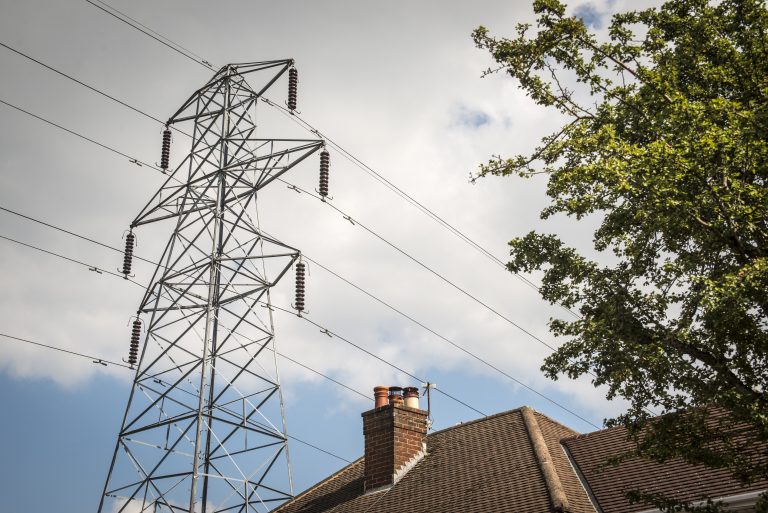
The report shows that:
- When output from wind power fell sharply on cold, calm days the stress to the system increased and in one incident created a higher chance of blackouts, with just 0.2GW of spare capacity available, compared to over 4GW the following day
- Flexible technologies like biomass, pumped storage and gas were able to increase their output to fill the void on some occasions when wind power reduced.
- An evening peak in demand was also managed with factories and supermarkets reducing their electricity usage, helping to maintain normal day-ahead power prices.
- After lockdown measures were introduced to contain the spread of Covid-19, weekday demand for electricity fell by 13% to levels not seen since the early 1980s.
Will Gardiner, Drax Group CEO said:
“So far in 2020, our lives, as well as the power system, have been affected like never before. To overcome the challenges we’re facing, we must keep sight of the importance of building a sustainable recovery for both our communities and our climate.
“By embracing flexible, low carbon technologies we will enable the UK’s power system to evolve and provide the secure and sustainable electricity supplies a post-Covid, zero carbon economy needs.”
ENDS
Media contacts:
Aidan Kerr
Drax Group Media Manager
E: [email protected]
T: 07849090368
Editor’s Notes
A record-breaking quarter in Britain’s power system:
- Wind power supplied an average of 12.3GW through February, beating the previous monthly record of 9.3GW set in December 2019.
- Biomass supplied more than a tenth of electricity over a day for the first time on March 27, 2020.
- Supply from all renewable sources accounted for 40% of electricity consumed during Q1 2020, overtaking output from fossil fuels for the first time.
Visualising the lockdown:
- You can see the fall in electricity demand compared to previous years in our animated GIF by clicking here.
About Electric Insights
- Electric Insights is commissioned by Drax and delivered by a team of independent academics from Imperial College London, facilitated by the college’s consultancy company – Imperial Consultants. The quarterly report analyses raw data made publicly available by National Grid and Elexon, which run the electricity and balancing market respectively, and Sheffield Solar.
- Electric Insights Quarterly focuses on supply and demand, prices, emissions, the performance of the various generation technologies and the network that connects them.
- The quarterly reports are backed by an interactive website electricinsights.co.uk which provides data from 2009 until the present.
- Uniquely, Electric Insights provides real time data about the UK’s transmission grid as well as embedded wind and solar generation which is not available from other sources.
About Drax
Drax Group’s purpose is to enable a zero carbon, lower cost energy future and in 2019 announced a world-leading ambition to be carbon negative by 2030.
Its 2,900-strong employees operate across three principal areas of activity – electricity generation, electricity sales to business customers and compressed wood pellet production.
Power generation:
Drax owns and operates a portfolio of flexible, low carbon and renewable electricity generation assets across Britain. The assets include the UK’s largest power station, based at Selby, North Yorkshire, which supplies five percent of the country’s electricity needs.
Having converted two thirds of Drax Power Station to use sustainable biomass instead of coal it has become the UK’s biggest renewable power generator and the largest decarbonisation project in Europe.
Its pumped storage, hydro and energy from waste assets in Scotland include Cruachan Power Station – a flexible pumped storage facility within the hollowed-out mountain Ben Cruachan. It also owns and operates four gas power stations in England.
Customers:
Through its two B2B energy supply brands, Haven Power and Opus Energy, Drax supplies energy to 250,000 businesses across England, Scotland and Wales.
Pellet production:
Drax owns and operates three pellet mills in the US South which manufacture compressed wood pellets (biomass) produced from sustainably managed working forests. These pellet mills supply around 20% of the biomass used by Drax Power Station in North Yorkshire to generate flexible, renewable power for the UK’s homes and businesses.
For more information visit www.drax.com













